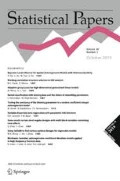This book is an eye-opener in various ways. From the viewpoint of statistics, it demonstrates once more that real progress in this field does not derive from advanced mathematics, but from asking the right questions and from setting up clever experiments. From the viewpoint of economics, it adds additional doubts to the usefulness of the homo oeconomicus as a proper model of human decision making, and from the viewpoint of psychology, it summarizes numerous surprising insights into the way the human brain is actually working which Kahneman has accumulated – often together with Amos Tversky – over the course of his brilliant career.
The most far-reaching of these insights concerns the mechanics of the human brain, which Kahneman views as two coexisting modes of thinking (“fast and slow”, as the title says). The first, the fast one, is System 1: System 1 is always working in the background, without our conscious mind being actively involved, trying to make sense of the myriads of information items rushing in at any interval of time. This it does surprisingly well, but sometimes various shortcuts are compromising its efficiency. It is this field of cognitive heuristics and biases that Kahneman and Tverski have dominated over the last decades, two of their most influential papers are reprinted here in full. System 2, on the other hand, requires active participation by the owner of the brain and is therefore much more demanding and much slower. And much of the book is then devoted to showing how System 1 und System 2 cooperate (most of the time) or obstruct each other (sometimes). While most of the pioneering work in this area has been done by Kahneman and coauthors himself, lots of credit is also given to other contributors, so if one is looking for an authoritative survey of this field, at the same time superbly written and intelligible also to non-experts, there is no better book than this.
Author information
Authors and Affiliations
Corresponding author
Rights and permissions
About this article
Cite this article
Krämer, W. Kahneman, D. (2011): Thinking, Fast and Slow. Stat Papers 55, 915 (2014). https://doi.org/10.1007/s00362-013-0533-y
Published:
Issue Date:
DOI: https://doi.org/10.1007/s00362-013-0533-y

